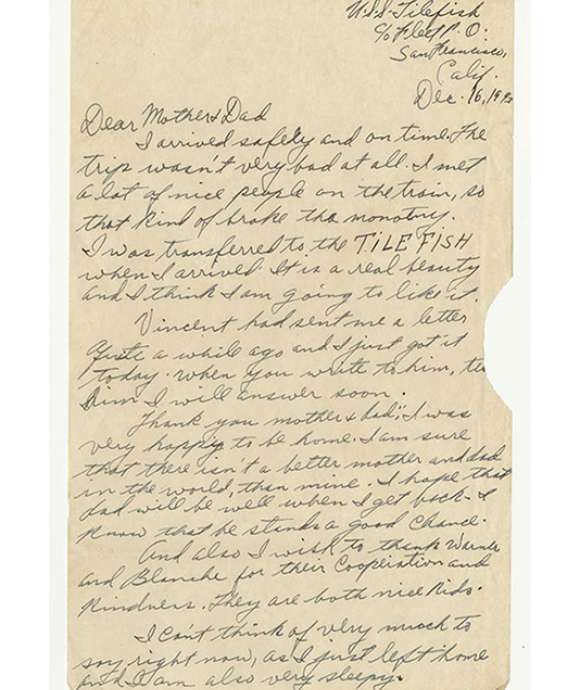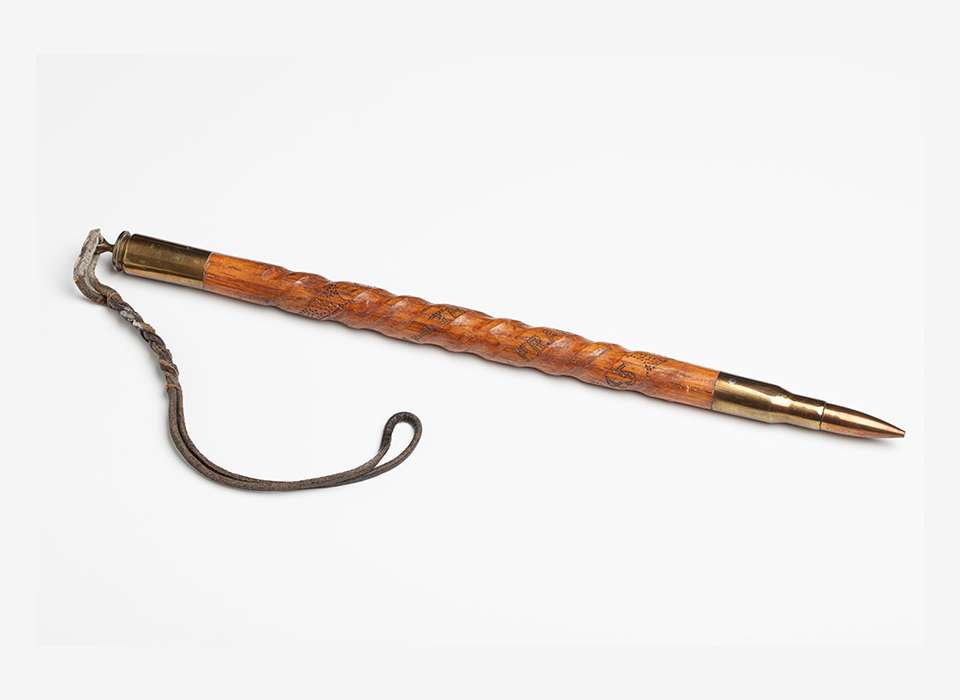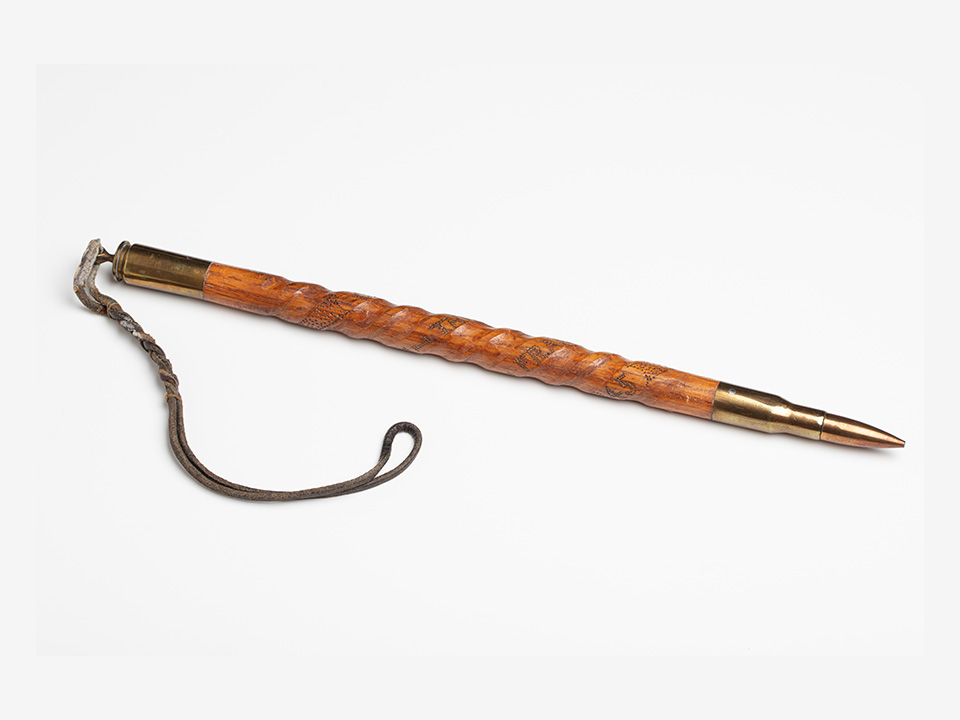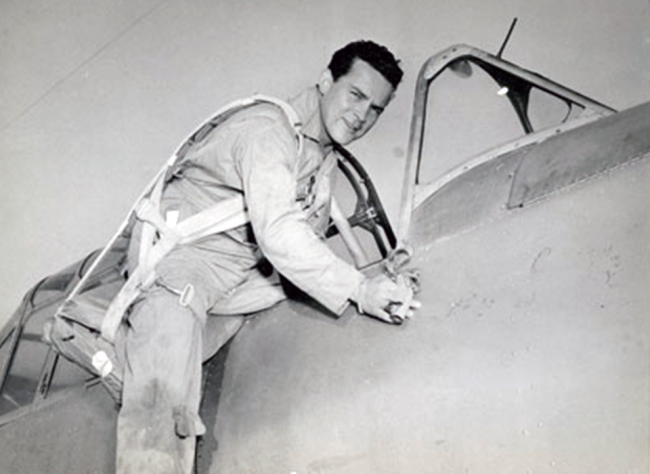John D. Sweitzer joined the US Army on March 15, 1943 when he was 19 years old. He received six weeks of basic training and 16 more weeks of training as a small arms repairman. He shipped out to England in January 1944. He served with the Ninth Army through its advance to Germany and the Battle of the Bulge, at times as an infantry replacement, and later in a bomb disposal squad. Shortly after the war ended, he was assigned to Ordnance Depot 6960 in Chateau Thierry, France. The depot was located in an old warehouse along a canal, and Sweitzer was responsible for guarding and supervising 50 German POWs who labored in the workshop. They received truckloads of small arms and ammunition of all types that they cleaned, repaired, and coated with cosmoline before packing them in wooden crates. Other members of Sweitzer’s old bomb disposal squad were in charge of recovering equipment like automotive tools, shop equipment, typewriters, and other ordnance items.
While Sweitzer was a member of Ordnance Depot 6960, his prisoners presented him with this swagger stick. Made from wood and a .50 caliber bullet and cartridge, it is carved with “Chateau Thierry France 1945.” Like most trench art, it is made from the discarded waste of war. The main wooden shaft probably started as part of a packing crate and the tips are made from a cartridge cut in half. A braided leather cord completes the pieces. In addition to the engraving, the shaft is carved with a spiral groove. The whole piece was varnished and polished. Sweitzer donated it to The National WWII Museum in 2000 shortly after it opened. He compared it to a German Field Marshal’s baton.
Swagger sticks trace their origins back to the Imperial Roman army, when centurions carried a vine staff as a badge of office. Swagger sticks are normally made of wood and vary in length but are always too short to be used as a cane. They are normally carried under the left arm and held parallel to the ground leaving the right arm free to salute. Although not common in the American Army, they were a required item for enlisted men and NCOs in the British Army before the war. They were to be carried when “walking out” or leaving the barracks for the evening.
Sweitzer was certainly pleased to receive the swagger stick from his prisoners, and I am sure they had a certain measure of gratitude and respect for him when they made and presented it. I have always suspected, however, that one of their motives was to try and dress up their Tec 3 guard and keep his hands out of his pockets as he marched them to and from their work shop.
The National WWII Museum's newest exhibit SOLDIER | ARTIST: Trench Art in World War II, organized by the Museum’s Senior Curator Tom Czekanski, features more than 150 pieces of trench art, many of them never before exhibited, and the majority of them donated to the Museum by their original creators—the WWII veterans themselves.
Learn more about the exhibit here.

Tom Czekanski
Cite this article:
MLA Citation:
APA Citation:
Chicago Style Citation:



![Max Fuchs, New York City cantor, sings as Rabbi Sydney [sic] Lefkowitz, Richmond, VA, conducts the first Jewish services from Germany.](/sites/default/files/styles/max_650x650/public/2025-10/image1.jpg)






